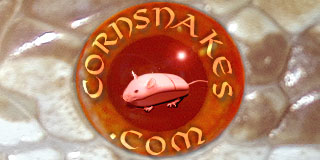ecreipeoj
Striped Topaz SK SG Free
I agree, I think mixing Caramel, Lavender and Anery A is a big mistake. I mean HUGE!! You never know what morph you are looking at when they hatch. :shrugs: :crazy02:  I prize my Lavenders that are not homo or het for Anery A. They are very rare these days.
I prize my Lavenders that are not homo or het for Anery A. They are very rare these days.
They all seem to be yanking and pulling at different directions in some ways and at the same direction in other ways. I know some Lavenders have yellow pigment, but is it the main yellow, or a secondary yellow pigment that shows up. It seems as if Lavender is trying to take yellow away while Caramel is trying to add it, and then Anery A is trying to cover up everything with black. I don’t know what the heck Anery B is doing, but they don’t help much in any of the mixes either.
It is like combining any of the hypo group. There are phenotype differences, but they are so slight, it leaves huge questions as to what genotype we are looking at. The most likely only good reason to mix any Anery Group or Hypo Group together is the possibility of a cool looking phenotype when combined with a third genotype.
We are compartmentalizing and grouping by the manner in which the genes affect the colors and patterns. The Anery Group an Hypo Group affect the colors of corns in similar ways, but not in the exact same way. I guess we could start a Pattern Group, and put Striped, Motley and Bloods in that group. I am sure that we could probably add a few more to the pattern group, like Banded for instance. Mixing them together will be and is just as confusing as the mixing within other groups. Striped Bloods, Motley Bloods, Striped/Motleys phenotypes are always in question.
I agree, that the Anery A gene adds melanin in a big way. Many people disagree, but it is almost like the Caramel gene that adds yellow. The Anery A gene adds Black. It does seem to take red away too, like Caramel. Do they overlay the red, take it away or replace it?
In the end, they are all simple recessive genes, or so we think. I think the Lavender gene is a very complicated recessive gene. We don’t need to group any of them together really, because they are distinct genotypes, but mixing similar groups together has had very few cool morphs created with them. On the other hand, mixing morphs of different groups have created some of the most beautiful and desirable morphs of corns that we have today.
Amel seems to be in its own group all by itself. It is a great combo with all of the other morphs, except for perhaps the Hypo Group.
They all seem to be yanking and pulling at different directions in some ways and at the same direction in other ways. I know some Lavenders have yellow pigment, but is it the main yellow, or a secondary yellow pigment that shows up. It seems as if Lavender is trying to take yellow away while Caramel is trying to add it, and then Anery A is trying to cover up everything with black. I don’t know what the heck Anery B is doing, but they don’t help much in any of the mixes either.
It is like combining any of the hypo group. There are phenotype differences, but they are so slight, it leaves huge questions as to what genotype we are looking at. The most likely only good reason to mix any Anery Group or Hypo Group together is the possibility of a cool looking phenotype when combined with a third genotype.
We are compartmentalizing and grouping by the manner in which the genes affect the colors and patterns. The Anery Group an Hypo Group affect the colors of corns in similar ways, but not in the exact same way. I guess we could start a Pattern Group, and put Striped, Motley and Bloods in that group. I am sure that we could probably add a few more to the pattern group, like Banded for instance. Mixing them together will be and is just as confusing as the mixing within other groups. Striped Bloods, Motley Bloods, Striped/Motleys phenotypes are always in question.
I agree, that the Anery A gene adds melanin in a big way. Many people disagree, but it is almost like the Caramel gene that adds yellow. The Anery A gene adds Black. It does seem to take red away too, like Caramel. Do they overlay the red, take it away or replace it?
In the end, they are all simple recessive genes, or so we think. I think the Lavender gene is a very complicated recessive gene. We don’t need to group any of them together really, because they are distinct genotypes, but mixing similar groups together has had very few cool morphs created with them. On the other hand, mixing morphs of different groups have created some of the most beautiful and desirable morphs of corns that we have today.
Amel seems to be in its own group all by itself. It is a great combo with all of the other morphs, except for perhaps the Hypo Group.
